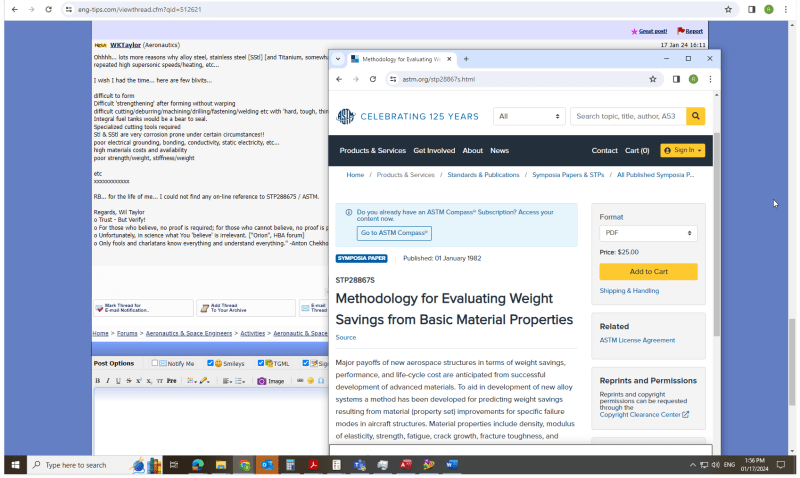MCA1983
Aerospace
- Sep 30, 2023
- 17
Why can't we use steel as Qing skin instead of aluminum alloy 2024.. although skin is lighter in weight when compared to aluminum alloy 2024.. density of steel is more than aluminum alloy.. is there any engineering reason ( tensile or compression ) other material properties to use aluminum alloy as wing skin ?

